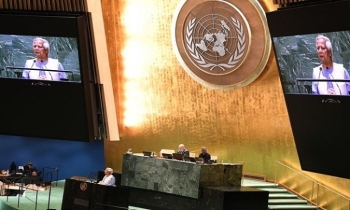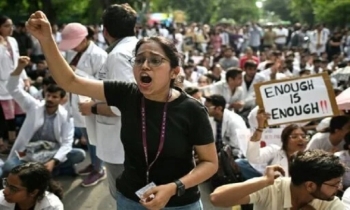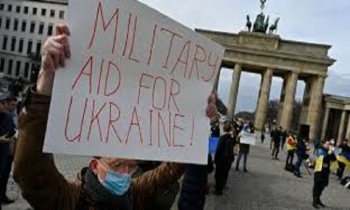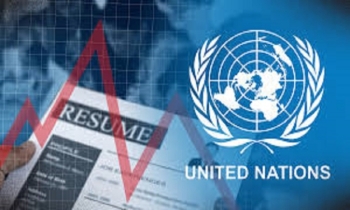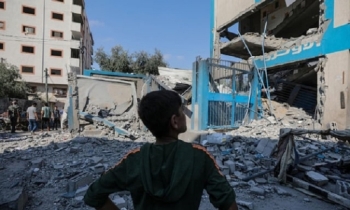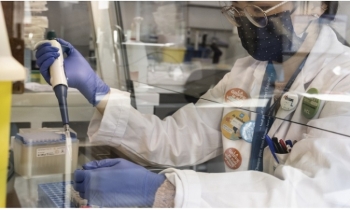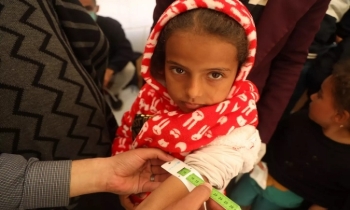Global partners cheer progress towards eliminating cervical cancer: WHO
BI Report || BusinessInsider
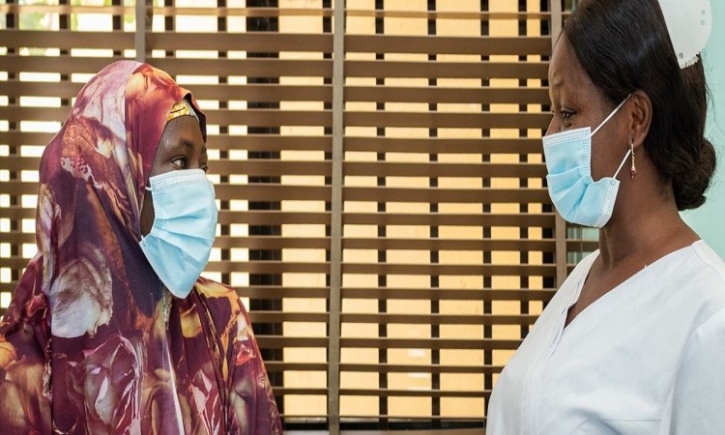
Photo: Collected
World leaders, cervical cancer survivors, advocates, partners, and civil society are coming together today to mark the third Cervical Cancer Elimination Day of Action.
The Initiative, which marked the first time Member States adopted a resolution to eliminate a noncommunicable disease, has continued to gain momentum, and this year's commemoration promises to be a beacon of hope, progress, and renewed commitment from nations around the world.
“In the last three years, we have witnessed significant progress, but women in poorer countries and poor and marginalized women in richer countries still suffer disproportionately from cervical cancer,” said Dr Tedros Adhanom Ghebreyesus, WHO Director-General.
“With enhanced strategies to increase access to vaccination, screening and treatment, strong political and financial commitment from countries, and increased support from partners, we can realize our vision for eliminating cervical cancer.”
Governments and communities are leading the way by declaring commitment and developing strategies to eliminate cervical cancer and countries around the world are rallying behind WHO’s call to action on 17 November.
- Australia is on target to be among the first countries in the world to eliminate cervical cancer, which the country anticipates to achieve in the next 10 years.
- In Benin, the First Lady, Her Excellency, Claudine Talon will host an HPV screening campaign.
- The Democratic Republic of the Congo will join the day of action for the first time with a march across Kinshasa calling for cervical cancer elimination, organized by the Ministry of Health and women’s associations.
- In Norway, researchers have recently reported finding no cases of cervical cancer caused by the human papillomavirus (HPV) in 25-year-olds, the first cohort of women who were offered the vaccine as children through the national vaccination programme.
- Indonesia announced this week a declaration committing to reach the 90-70-90 targets for cervical cancer elimination through the national cervical cancer elimination plan (2023 to 2030).
- Japan is lighting up the country in teal to mark the day, and honour two years of the re-introduction of the HPV vaccine in the country.
- In Singapore, the Alliance for Active Action Against HPV (A4HPV) will host a spin cycling event to help raise awareness.
- In the United Kingdom, England’s National Health Service (NHS) pledged this week to eliminate cervical cancer by 2040.
Strong progress on HPV vaccination
Since the launch of the Global strategy to accelerate the elimination of cervical cancer as a public health problem three years ago, a further 30 countries, including countries with large populations and cervical cancer burden such as Bangladesh, Indonesia and Nigeria, introduced the HPV vaccine. As of today, 140 countries have introduced HPV vaccine into national immunization programmes.
The global HPV vaccination coverage of girls that received at least one dose of HPV vaccine has increased to 21 percent in 2022 – exceeding the pre-pandemic levels for the first time. If this rate of progress is maintained the world would be on track to meet the 2030 target to make HPV vaccines available to all girls everywhere.
WHO, in collaboration with GAVI and other partners, has initiated systematic efforts to catch-up vaccinations for girls who missed HPV vaccination as a result of pandemic disruptions and to revitalize HPV vaccination programmes towards reaching the 90% coverage target.
In Nigeria, for example, HPV vaccine was introduced into the routine immunization programme with a single-dose schedule in October 2023. The country aims to vaccinate 7.7 million girls – the largest number in a single round of HPV vaccination in the region.
Weak progress on screening and treatment
Countries have invested to improve access to screening all over the world. This year, together with Unitaid and its implementing partners, Ministries of Health in 14 low- and middle-income countries reached a milestone of screening over a million women.
In most countries, those diagnosed with cervical cancer still need better access to surgery, radiotherapy, chemotherapy and palliative care.
Still, only 65 percent of countries include cervical cancer screening services and 69 percent include radiotherapy for treatment of cervical cancer in the health benefit packages as part of universal health coverage schemes.
However, pioneering country experiences showcase progress that is being made on the ground:
- El Salvador released new screening targets to achieve 70 percent coverage by 2030 and to provide access to treatment for 90 percent of women with cervical disease.
- The Ministry of Health now offers services in all 75 screening facilities throughout the country. The country also made progress on the treatment of precancerous lesions; and
- Bhutan, which was among the Member States that raised this agenda to the WHO Executive Board in 2019, continues to make remarkable strides in cervical cancer prevention and treatment.
- The country recently reported that it has screened 90.8 percent of eligible women for cervical pre-cancer and cancer through its health flagship project, of these, 92 percent of women with cervical pre-cancer were treated and all women with invasive cancer were managed.
To enhance screening quality, reduce costs and broaden access to health-care services, WHO now endorses HPV testing as the preferred method for cervical cancer screening.
This includes support for self-sampling, which makes screening even more convenient. In addition, WHO prequalified a fourth HPV test in June 2023, providing an additional option for countries seeking to implement advanced screening methods to identify patients requiring treatment more effectively.

